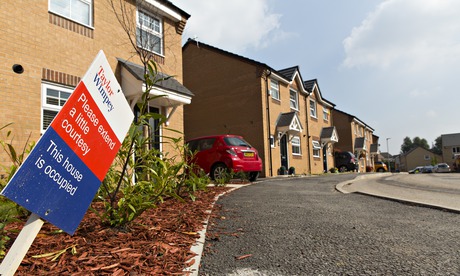Franchising, retail, business

28/12/2014
Collective pretax profits up 34% on last year while number of affordable homes built in England falls to eight-year low
Britain’s ten biggest housebuilders will see profits climb to more than £2bn this year despite the industry falling far short of local government targets on affordable homes.
While profits surge back to levels not seen since the last credit-fuelled property boom, the number of affordable homes built in England has fallen to an eight-year low.
Analysis by the Bureau of Investigative Journalism shows that the country’s biggest builders, who between them control enough land to create 480,000 homes, will make pretax profits of more than £2.1bn in 2014 – a 34% jump on last year.
The total is based on reported and projected profits for firms including Persimmon, Taylor Wimpey and Barratt, many of which have seen sales boosted by the government’s Help to Buy schemes.
The return to pre-crash profit levels comes as official figures forecast 42,710 affordable homes will be built in England in the year to April – the lowest number since 2006, and a 26% fall since 2010.
Jon Sparkes chief executive of homeless campaign group Crisis, said: “At a time when the country faces a housing crisis and with homelessness having risen significantly in recent years, we desperately need developers to provide more affordable homes.”
Steve Turner of the Home Builders Federation whose members account for 80% of houses built in England and Wales, said: “The industry was devastated in the financial crash, profits initially fell very steeply, or disappeared into losses, and many companies disappeared. Only now are profits returning to pre-crash levels allowing companies to rebuild, restructure and replace lost capacity.”
Affordability campaigners suggest part of the reason why developers have failed to achieve targets for cheaper homes is to be found in an opaque part of the planning system, known as the financial viability test. This is widely used by housebuilders to reduce, perfectly legally, the number of affordable homes to below local authority targets. More than half of affordable homes in England are built by private developers through what is known as the Section 106 system, in which tests of financial viability are key.
These assessments form the basis of negotiations with local authorities when developers want to reduce the number of low-cost homes below the local authority’s targets.
Targets typically range between 25% and 40% of the total number of homes in a scheme and are set according to local housing need. The assessment works by combining all the costs linked to a housing development, including a 20% margin for the developer but excluding the land price. These costs are then subtracted from a scheme’s projected sales revenue based on current values.
If the resulting total is not much higher than its current use value, the scheme is likely to be considered unviable by developers who will then argue the number of affordable homes required must be cut. This means assumptions on sales and costs are crucial.
The bureau’s research has found that:
• The process is shrouded in secrecy with many developers regularly refusing to disclose to the public the assessments on which their figures are based.
• Councils rarely employ external experts to scrutinise housebuilders’ figures contained in financial viability submissions.
• Sales projections used in viability assessments are frozen at the time a scheme receives planning consent preventing the council from sharing in any benefit from rising house prices.
Housing campaign groups point to 1.4m households on council waiting lists – a 34% rise since 1997 – and 85,000 children living in temporary accommodation, equivalent to more than the entire population of the Hertfordshire town of Stevenage. They argue the government now has to put pressure on builders to meet affordable housing targets.
Joanna Kennedy, chief executive of housing and welfare campaign group Z2K, said: “If Whitehall genuinely wants to tackle the housing crisis they should be supporting boroughs in challenging developers’ questionable viability assessments, instead of undermining council’s efforts to secure planning gain through section 106.”
A Department for Communities and Local Government spokesman said: “It is for local authorities to agree an appropriate level of contribution to affordable housing with developers.Our guidance is clear that changes in costs and property value should be considered in longer term developments, and councils should use appropriate methods and expertise, whether in-house or external, to determine these.”
Fonte:http://www.theguardian.com/business/2014/dec/28/housebuilders-profits-affordable-homes?CMP=EMCNEWEML6619I2